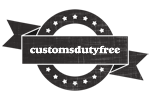Romania is a country located at the crossroads of Central and Southeastern Europe. It has a coastline on the Black Sea and borders Bulgaria, Hungary, Moldova, Serbia, and Ukraine. Romania has mountain ranges running from the north and west in the interior, which are collectively known as the Carpathians. The government system is a republic; the chief of state is the president, and the head of government is the prime minister. Romania has a mixed economyA country's economic system which has both private and state... which includes a variety of private freedom, combined with centralized economic planning and government regulation. Romania is a member of the European UnionEU. Previously called the European Community. An internation... (EU).
In the aftermath of the global financial crisis, Romania signed a $26 billion emergency assistance package from the IMF, the EU, and other international lenders, but GDP contracted until 2011. In March 2011, Romania and the IMF/EU/World Bank signed a 24-month precautionary standby agreement, worth $6.6 billion, to promote fiscal discipline, encourage progress on structural reforms, and strengthen financial sector stability; no funds were drawn. In September 2013, Romanian authorities and the IMF/EU agreed to a follow-on standby agreement, worth $5.4 billion, to continue with reforms. This agreement expired in September 2015, and no funds were drawn. Progress on structural reforms has been uneven, and the economyThe management of money, currency and trade of a nation. The... still is vulnerable to external shocks.
Economic growthAn increase in a region's or nation's production of goods an... rebounded in 2013-15, driven by strong industrial exports and excellent agricultural harvests, and the fiscal deficit was reduced substantially. Industry outperformed other sectors of the economyThe management of money, currency and trade of a nation. The... in 2015. Exports remained an engine of economic growthAn increase in a region's or nation's production of goods an..., led by tradeThe buying and selling or exchange of goods and services. Th... with the EU, which accounts for roughly 70% of Romania tradeThe buying and selling or exchange of goods and services. Th.... Domestic demand was a second driver, due to the mid-2015 cut, from 24% to 9%, of the VAT levied upon foodstuffs. In 2015, the government of Romania succeeded in meeting its annual target for the budgetAllocation of funds or the estimation of costs for a departm... deficit, the external deficit remained low, even if it rose due to increasing imports. For the first time since 1989, inflationNormally referring to the economy of a country, inflation is... turned into deflationEconomic decline typified by falling costs of goods and serv..., allowing for a gradual loosening of monetary policy throughout the period.
Important Details
- Country ISO3 : ROM
- Country Code : 642
- Income Group : Upper middle income
- Lending Category : IBRD
- Region : Europe & Central Asia
- Currency Unit: New Romanian leu
- WTO Member : Yes
- TradeThe buying and selling or exchange of goods and services. Th... organisations : European UnionEU. Previously called the European Community. An internation..., WTO
- world rank : 61
- Regional Ranking : 29th in Europe

